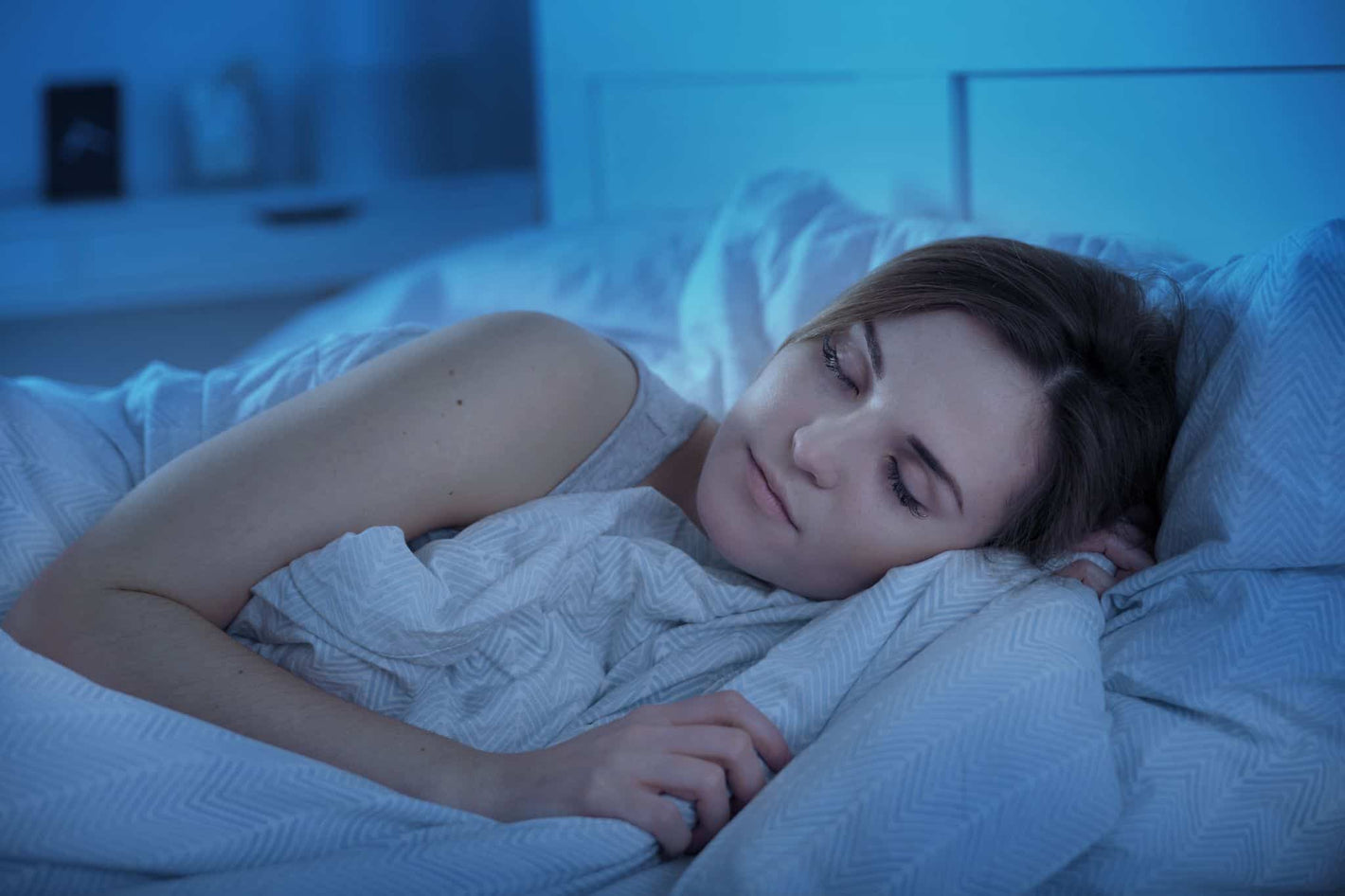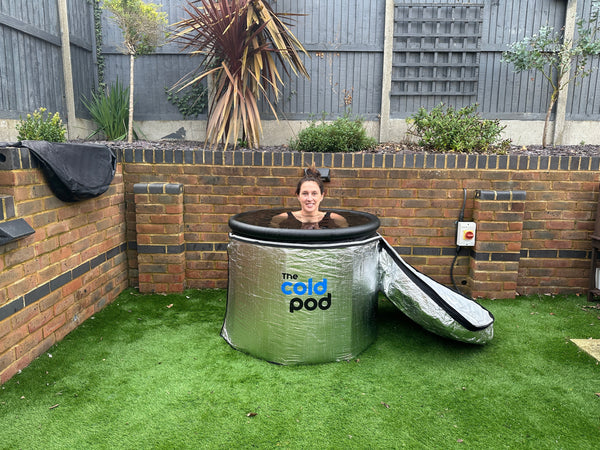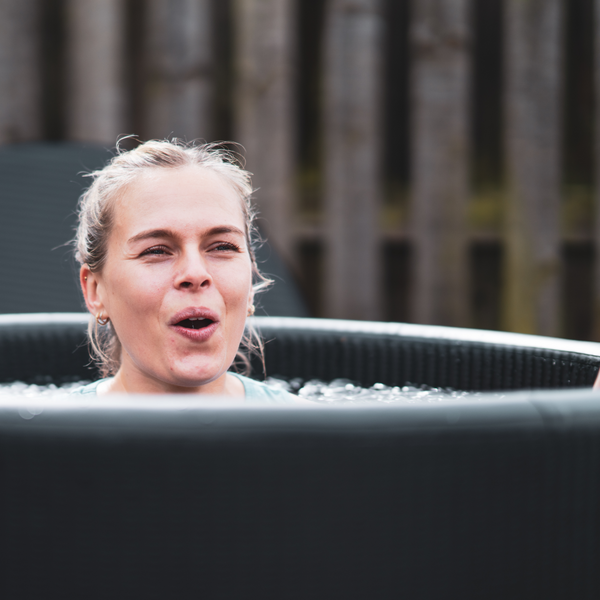Over the past few years, ice bathing has generated quite the reputation as an invigorating practice that comes with a multitude of health benefits. A seemingly peculiar (yet increasingly popular) activity; ice bathing has piqued the interest of many, leaving us wondering if there might be some truth to its numerous advocates’ claims.
The Science Behind Ice Bathing
Before we dip into the specifics of how ice bathing can improve sleep quality, it’s essential to understand the science behind this chilly practice. Ice bathing exposes the body to cold temperatures, leading to a series of physiological responses that may contribute to its potential benefits.
The concept of thermogenesis
Thermogenesis is the process whereby our bodies produce heat in response to cold exposure. This process kicks in as the body works to maintain its core temperature; ultimately leading to an increase in metabolic rate. It has been suggested that regular ice baths may contribute to improved metabolism; as well as enhanced fat-burning capabilities.
Impact on the nervous system
Cold exposure has a profound effect on the nervous system – particularly the sympathetic and parasympathetic nervous systems. These systems regulate the ‘fight or flight’ and ‘rest and digest’ responses, respectively. Ice bathing can trigger the release of norepinephrine; a hormone that reduces inflammation and increases focus and attention, promoting a sense of mental clarity.
Hormonal changes induced by cold exposure
Cold bathing is reported to promote the release of dopamine and endorphins in addition to norepinephrine. These hormones are known to create a sense of well-being and have been connected to mood improvement and pain relief. This hormonal concoction may help explain why ice bathing has so many positive effects, including improved sleep.
How Ice Bathing Improves Sleep Quality
The physiological responses brought on by ice bathing may directly impact the factors that influence how soundly we sleep at night.
Reduction of stress and anxiety
The release of endorphins and norepinephrine during ice bathing can contribute to a reduction in stress and anxiety levels. These hormones help to promote a sense of calm and relaxation, which can be especially beneficial when preparing for a restful night’s sleep. By alleviating stress and anxiety, ice bathing may create the ideal mental state to help you drift off more easily.
Stimulation of melatonin production
Melatonin is the hormone responsible for regulating our sleep-wake cycle. Interestingly, research has shown that exposure to cold temperatures can stimulate melatonin production, making it easier for your body to transition into a state of rest and sleep. By incorporating ice baths into your routine, you may experience an increase in melatonin levels; which in turn can lead to more restful and restorative sleep.
Regulation of body temperature
Our body temperature naturally drops during sleep, signalling to our brain that it’s time to rest. By exposing ourselves to cold temperatures through ice bathing, we can help our body to regulate its temperature more efficiently. This process can lead to an easier transition into sleep and may even enhance the quality of your sleep throughout the night.
In summary, hormonal change; stress reduction, and body temperature regulation are all ways that ice bathing can enhance sleep quality. You may find that ice bathing becomes an important part of your pre-sleep routine once you understand and take advantage of these benefits.
Practical Tips for Incorporating Ice Baths into Your Routine
If you’re keen to reap the sleep-enhancing benefits of ice bathing, it’s important to know how to incorporate this practice into your daily routine safely and effectively.
Preparing for an ice bath
- To start with, aim for a temperature of around 10-15°C (50-59°F). As you become more acclimatised, you can gradually lower the temperature of the water. Adding ice cubes or using a specialist ice bath tub such as our Cold Pod can help you achieve the desired temperature.
- Proper attire: Wearing a swimsuit or sports shorts is recommended for ice bathing. Additionally, consider wearing neoprene booties and gloves to protect your extremities from the cold; as well as a thermal hat to minimise heat loss from your head.
Timing and duration
- Frequency: Start by incorporating ice baths into your routine once or twice a week. As you become more comfortable with the practice, you can gradually increase the frequency, depending on your personal preferences and physical response.
- Best time: While ice baths can be taken at any time of day, to maximise their sleep-enhancing effects, consider taking one in the evening, a few hours before bedtime. This timing allows your body to capitalise on the relaxation and melatonin-boosting benefits just before you’re ready to hit the sack.
Gradual exposure
- Adjusting to the cold: As with any new practice, it’s important to ease into ice bathing gradually. Begin with shorter durations, such as 1-2 minutes, and slowly increase the duration as you become more comfortable. Aim to work your way up to 10-15 minutes per session.
- Monitoring your body’s response: Keep a close eye on how your body responds to being exposed to the cold. It’s important to stop your session and get medical help if you feel overly uncomfortable; have trouble breathing, or experience any other alarming symptoms.
Potential Risks and Precautions of Ice Bathing
Although ice bathing has its benefits; it’s important to be aware of the risks and take the right precautions in order to keep yourself safe.
Health conditions
If you have any pre-existing health conditions, it\’s essential to consult with your GP before trying cold-water immersion. Certain conditions, such as Raynaud\’s disease; cardiovascular issues, or compromised immune systems, may be negatively affected by cold exposure, therefore it is important to seek professional advice to determine if ice bathing is suitable for you.
Staying safe during ice baths
To ensure a safe ice bathing experience, follow these guidelines:
- Never take an ice bath alone – always have a friend or family member present in case you need assistance.
- Enter the water slowly and calmly, allowing your body to adjust to the temperature gradually.
- Focus on your breathing and try to maintain a slow, steady rhythm. Deep breathing techniques, such as the Wim Hof Method, can help to regulate your body’s response to the cold.
- If you feel lightheaded, dizzy, or experience difficulty breathing, exit the ice bath immediately and seek medical attention if necessary.
Knowing when to stop
It’s important to listen to your body during ice baths and know when to stop. If you’re shivering uncontrollably, experiencing numbness or tingling in your extremities, or feeling unwell, it’s time to end your session. Be aware of your body’s limits and never push yourself to the point of discomfort or pain.
By being aware of potential risks and taking the necessary precautions, you can safely explore the world of ice bathing and enjoy its potential sleep-enhancing benefits.
Alternative Cold Therapy Options
If the idea of ice bathing seems a bit too daunting, or you’re looking for additional ways to incorporate cold therapy into your routine, there are several alternative options to consider. These methods can also help improve sleep quality while offering a slightly less intense approach to cold exposure.
- Cold showers are a more accessible alternative to ice baths and can be easily incorporated into your daily routine. Gradually decrease the water temperature during your shower, allowing your body to adjust to the cooler water. Aim for a final temperature of around 10-20°C (50-68°F) and spend a few minutes under the cold water to experience the benefits.
- Cold plunge pools, often found in spas and wellness centres, provide a more controlled environment for cold exposure. These pools typically maintain a water temperature between 7-12°C (45-54°F) and offer a gentler approach to ice bathing. To maximise the benefits, immerse yourself in the cold plunge pool for several minutes after a warm sauna or steam room session.
- Cryotherapy is a more advanced cold therapy option, involving exposure to extremely cold temperatures for a brief period (typically 2-3 minutes). This treatment is administered in specialised cryotherapy chambers and is believed to provide similar benefits to ice bathing. It is important to follow the guidance of trained professionals when using cryotherapy.
Conclusion
An innovative and thrilling method of self-care and wellbeing; ice bathing has the potential to improve your sleep quality. We encourage you to try these methods and discover the advantages they can provide for a good night’s sleep – whether you decide to plunge into ice baths or choose an alternative cold therapy technique.







